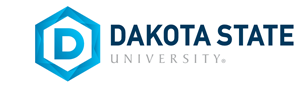Designing Lawsourcing for E-Democracy in the United States
Document Type
Conference Proceeding
Publication Date
2019
Abstract
This research examines the history of E-Democracy initiatives, instantiations, and findings via extant literature with the aim of leveraging this knowledge in the planning, design, development, and evaluation of a lawsourcing platform (Orozco 2016). The research purpose is to enable U.S. citizens to: (1) directly propose new bills for consideration by the U.S. Congress, either individually or collectively, and (2) give detailed and immediate feedback on pending and existing legislation by recommending unlimited additions, subtractions, or substitutions in text and by up or down voting entire initiatives. Related works show correlations between well-implemented government E-Services and improvement of internal relations of public administrations, relationships between administrations and citizens, and relationships between administration and the private sector (Alcaide-Muñoz et al. 2015; Tassabehji et al. 2007). Concurrently, U.S. citizens are seeing radical and expedient advances in private-sector information and communication technology (ICT) while the public sector remains technologically reactive, perceived as highly unfavorable by U.S. citizens, and less responsive to public sentiment in recent decades (Orozco 2016). Through a structured literature review, we attempt to define the relevant concepts, explore applicable theories, and discuss them in terms of design science research (DSR) frameworks (Hevner et al. 2004; Peffers et al. 2008). Initial findings from this research-in-progress will be presented for this TREO talk and encourage discussion concerning E-Government and related theories, past and existing E-Democracy initiatives, and DSR methodology.
Recommended Citation
Papp, Glenn; El-Gayar, Omar F.; and Lovaas, Petter, "Designing Lawsourcing for E-Democracy in the United States" (2019). Research & Publications. 212.
https://scholar.dsu.edu/bispapers/212

